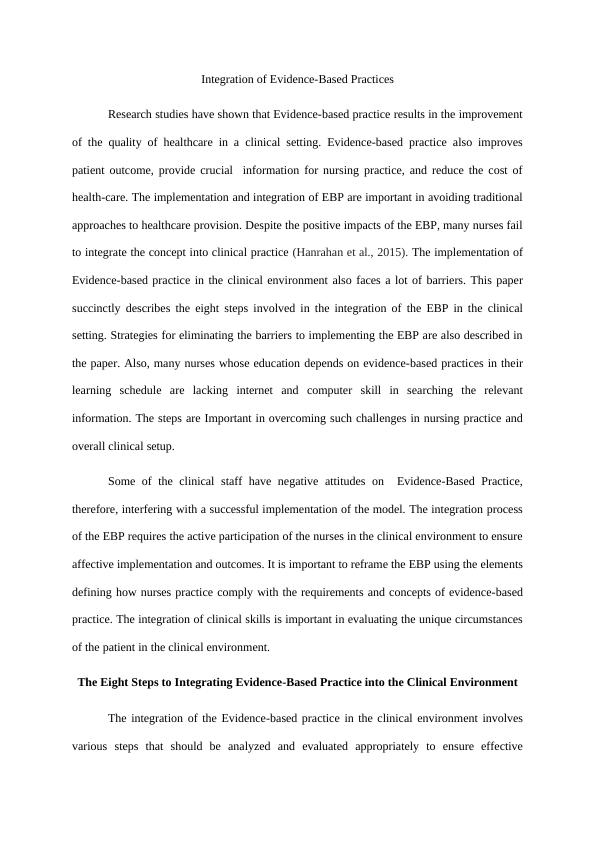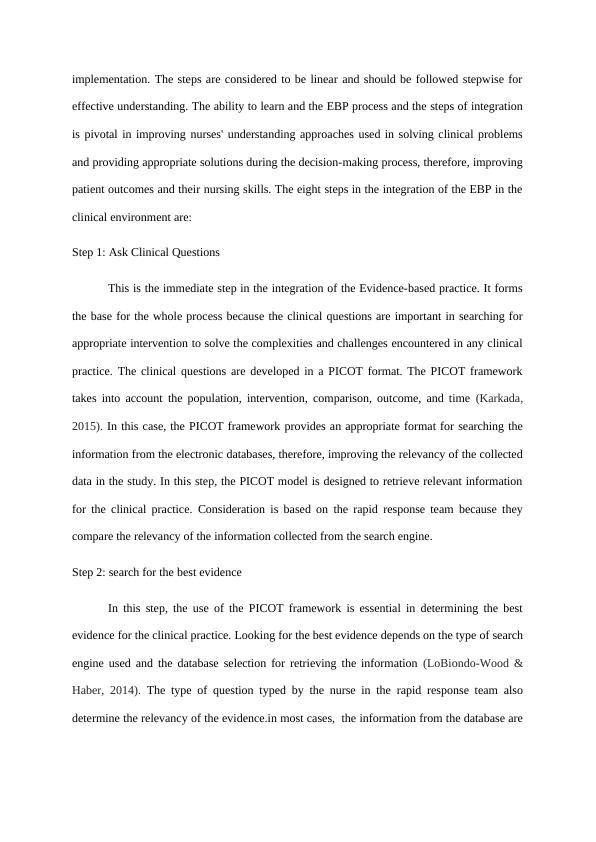Integration of Evidence-Based Practices
11 Pages2733 Words93 Views
Added on 2022-12-26
About This Document
Research studies have shown that Evidence-based practice results in the improvement of the quality of healthcare in a clinical setting. This paper describes the eight steps involved in the integration of the EBP in the clinical setting and strategies for eliminating the barriers to implementing the EBP.
Integration of Evidence-Based Practices
Added on 2022-12-26
ShareRelated Documents
End of preview
Want to access all the pages? Upload your documents or become a member.
Evidence-Based Practice Model (EBP) - Desklib
|5
|913
|228
Incorporating EBP into Clinical Practice
|8
|1845
|268
Evidence-Based Practice in Nursing: Importance and Significance
|4
|727
|462
Evidence Based Practise Needle Stick Injury Assignment 2022
|10
|2255
|34
HLTEN514B - Apply research skills
|14
|2921
|162
Preventing Ventilator Associated Pneumonia in ICU: Evidence Based Practice
|6
|1452
|165




